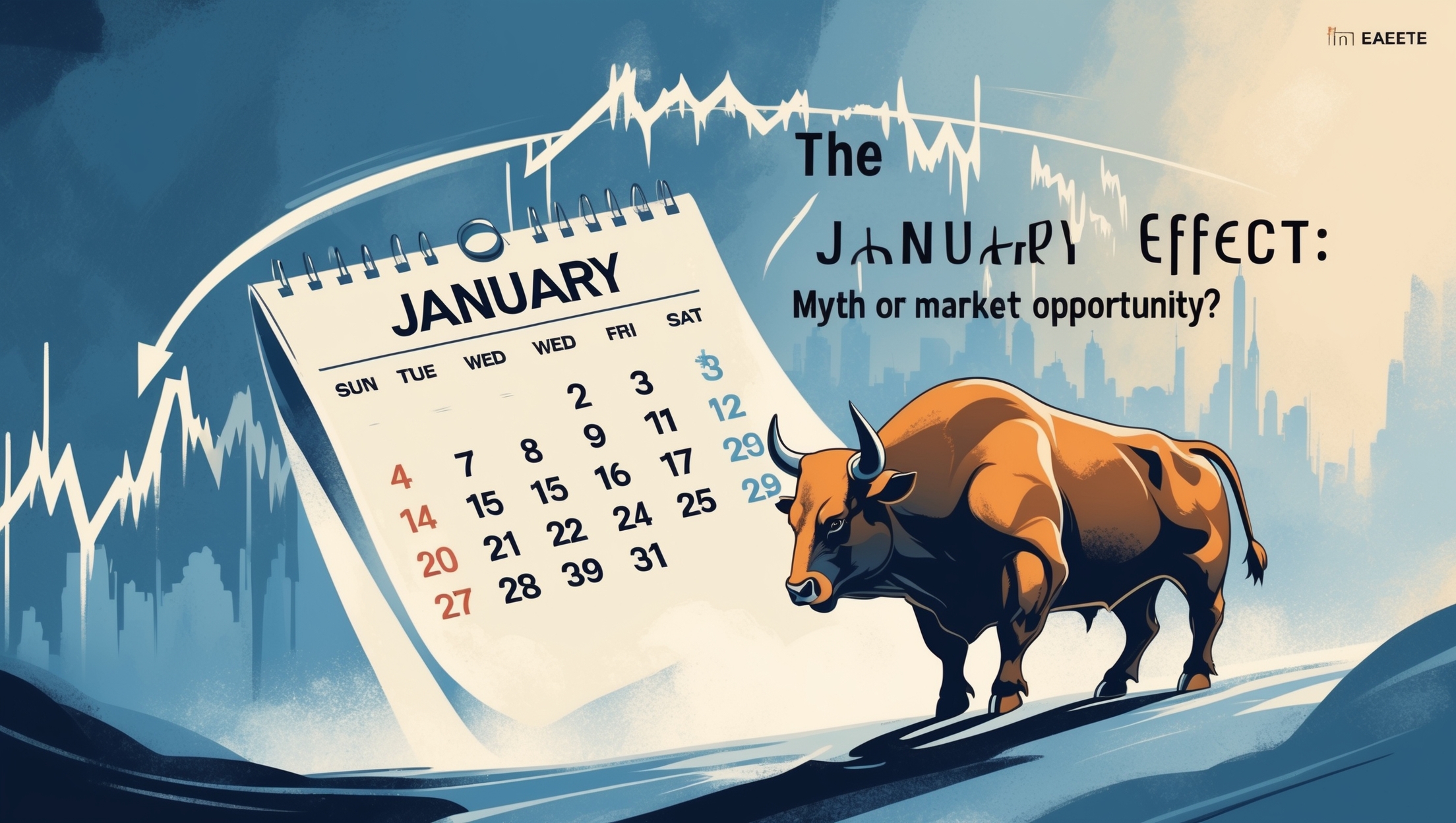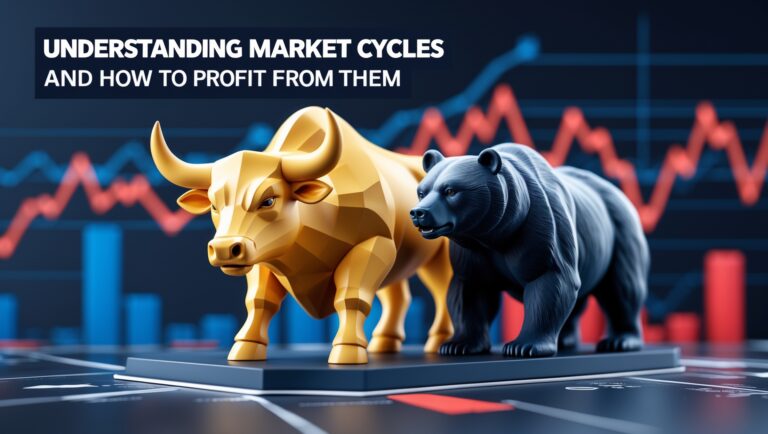The January Effect: Myth or Market Opportunity?
The January Effect: Myth or Market Opportunity?
Discover the truth behind the January Effect, its potential impact on the stock market, and how I personally approach seasonal investing opportunities while managing risk and building a strong portfolio.

Table of Contents
What Is the January Effect?
The January Effect is a market phenomenon where stocks, especially small-cap stocks, historically tend to rise in January. When I first heard about it, I wondered if it was a real opportunity or just a myth.
Some analysts believe this effect is caused by investors buying back stocks after selling for tax reasons at year-end, while others think it’s simply market psychology.
Is It Consistent?
From my research, the January Effect is not guaranteed every year. Some years it appears strong, while other years it’s barely noticeable. I’ve learned to view it as a possible trend rather than a reliable strategy.
Trying to time the market based solely on the January Effect is risky. I focus on using it as one factor among many in my investment decisions.
How I Approach Seasonal Trends
I personally track historical market patterns, including the January Effect, to identify potential opportunities. But I never rely solely on seasonal trends to make investment decisions.
For me, it’s about combining trends with strong fundamentals, diversification, and risk management to build a portfolio that can perform in any market environment.
Small-Cap vs. Large-Cap Stocks
The January Effect historically favors small-cap stocks more than large-cap stocks. I sometimes review small-cap ETFs during January to see if there are opportunities, but I remain cautious and avoid overexposure.
Large-cap stocks are more stable, and I treat them as the core of my portfolio, while using small-cap positions selectively to capture potential seasonal gains.
Timing and Risk
I’ve learned that trying to time the January Effect precisely is difficult. Markets can be unpredictable, and focusing too much on timing can lead to mistakes and unnecessary risk.
Instead, I use a long-term investing strategy and treat the January Effect as a potential bonus rather than a primary driver of my portfolio.
Diversification Is Key
Even when looking at seasonal trends, I maintain diversification across sectors and asset classes. This ensures that I’m not overly exposed to a single trend or market move.
Diversification has helped me avoid big losses and stay consistent with my long-term goals, regardless of short-term patterns.
Using ETFs to Capture Trends
I sometimes use sector or small-cap ETFs to take advantage of seasonal trends like the January Effect. ETFs allow me to gain exposure efficiently while managing risk.
This approach lets me participate in potential gains without over-concentrating in individual stocks that might be more volatile.
Historical Context Matters
Looking at historical data helps me understand the probability and magnitude of the January Effect. While it can appear in some years, it’s not a guarantee, so I always combine historical context with other fundamental analysis.
This mindset keeps me realistic and disciplined in my investing decisions.
Want My Full Seasonal Investing Strategy?
If you want to see how I incorporate trends like the January Effect into a broader investing system, I share my full approach in my ebook: Pay Bills with Stocks.
I detail how I balance seasonal trends, long-term growth, and risk management to generate consistent income while building wealth.
Final Thoughts
The January Effect can be interesting, but it’s not a guaranteed market opportunity. For me, it’s one tool among many in my investing toolkit.
By combining awareness of trends with diversification, strong fundamentals, and long-term strategies, I’ve been able to grow my portfolio while minimizing unnecessary risk.
If you want a practical guide to using market patterns and investing strategies to generate real income, check out my full system: Pay Bills with Stocks.
One of the first things I realized is that the January Effect is more pronounced in small-cap stocks. While tempting, I never put too much of my portfolio into these stocks because volatility is higher.
I also track historical patterns over multiple decades. Some years the January Effect is strong, other years it barely shows. This taught me not to rely on it blindly but to use it as a reference point.
I often look at ETFs that track small-cap indices in January. This allows me to participate in potential gains while keeping diversification and risk management intact.
For me, timing is critical. I avoid trying to predict the exact day or week the effect will happen. Instead, I invest gradually and stay consistent, which reduces stress and the risk of poor timing.
I also analyze sector performance during January. Some sectors historically outperform others, and I sometimes use this insight to adjust my satellite holdings slightly.
The January Effect can also provide psychological insight. Investor optimism and new-year resolutions sometimes drive buying activity, creating short-term trends I monitor carefully.
I’ve learned that historical averages don’t guarantee future results. While January has historically been strong for small-caps, external factors like interest rates, inflation, or geopolitical events can change outcomes.
I also use the January Effect to review my portfolio allocation. Seeing patterns at the start of the year gives me a chance to rebalance, lock in gains, or adjust risk exposure.
One of my favorite strategies is to combine seasonal trends with long-term fundamentals. This ensures that I don’t chase short-term patterns at the expense of solid growth opportunities.
I keep some cash on hand in January to take advantage of potential dips or opportunities identified by the effect. Having flexibility allows me to act without panic.
I also track dividend yields during January. Small-cap ETFs with reliable dividends can provide additional upside while still participating in potential price appreciation.
I’ve noticed that the January Effect often overlaps with tax-loss selling rebounds from December. Understanding this pattern helps me make more informed decisions without overreacting.
I maintain a long-term perspective, viewing any January gains as a potential bonus rather than a guaranteed outcome. This keeps my strategy grounded and sustainable.
I occasionally use options or leveraged ETFs cautiously to capture short-term trends, but I make sure my core holdings remain diversified and low-risk.
Finally, if you want to see exactly how I incorporate the January Effect into my broader investing strategy while generating consistent income, I detail everything in my ebook: Pay Bills with Stocks. It’s the system I personally use to grow my portfolio while managing risk and covering real-life expenses.

Stay ahead in the stock market! Subscribe to our newsletter and receive exclusive stock flow reports, trading insights, and actionable tips directly in your inbox. Join thousands of traders who get our updates first.







